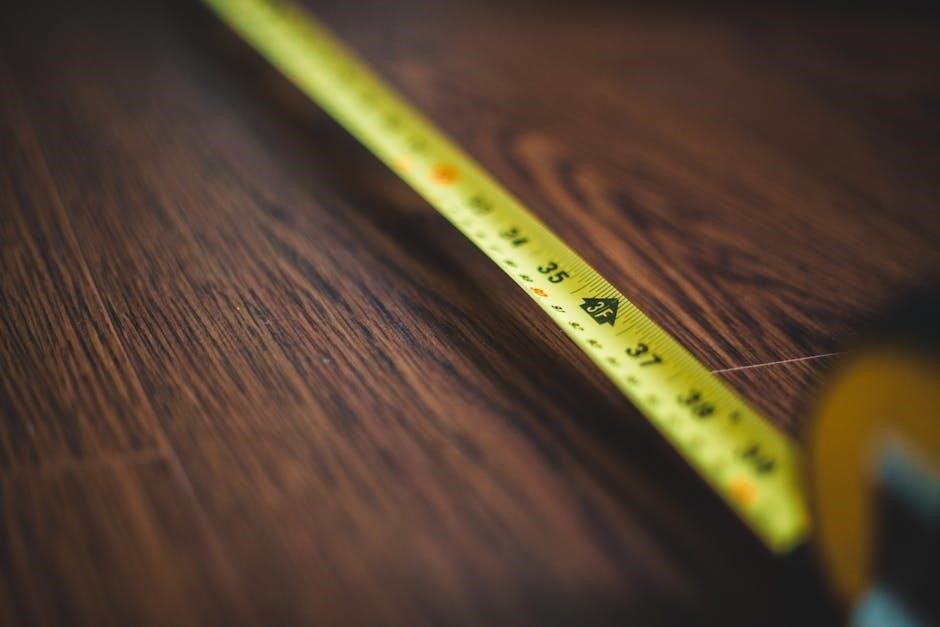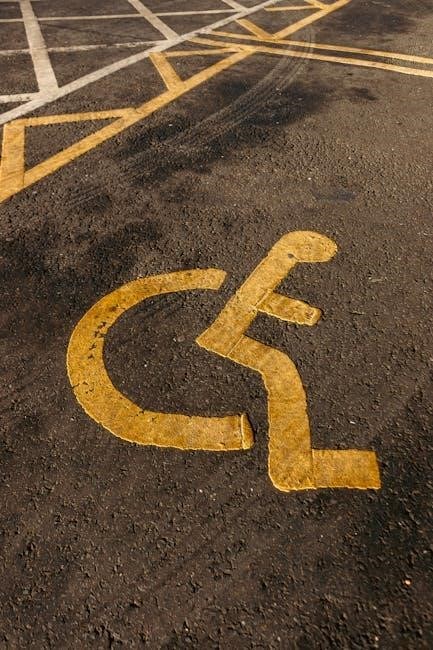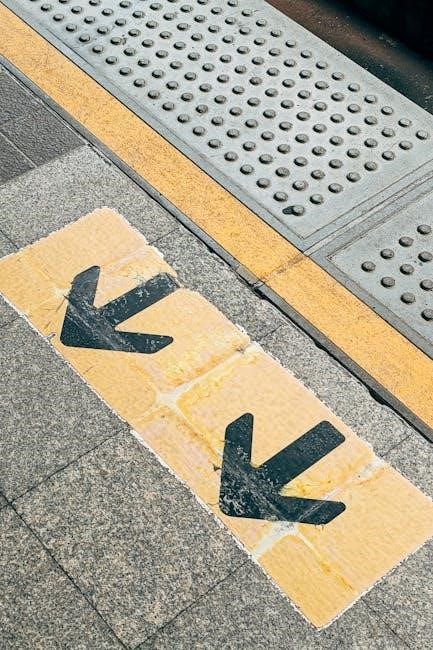The Lee Enfield rifle’s markings reveal its rich history, manufacturer origins, and military service. This guide helps enthusiasts and collectors decipher these identifying features.
Overview of the Lee Enfield Rifle

The Lee Enfield rifle, a iconic bolt-action design, served as the primary firearm for the British Empire and Commonwealth forces from the early 20th century through World War II. Known for its reliability and durability, it became a trusted weapon in various military campaigns. The rifle’s design evolved over decades, incorporating improvements while maintaining its core functionality. Its widespread adoption and longevity make it a significant piece of military history, cherished by collectors and historians alike for its historical and tactical significance.
Importance of Understanding Markings
Understanding the markings on a Lee Enfield rifle is crucial for collectors, historians, and enthusiasts. These markings provide insights into the rifle’s origins, production history, and military service. By deciphering them, one can verify authenticity, determine the rifle’s age, and trace its journey through various conflicts. This knowledge enhances the appreciation of the firearm’s historical significance and aids in identifying rare or unique variations. For collectors, accurate interpretation of markings is essential for determining value and ensuring the rifle’s provenance.

Understanding Lee Enfield Markings

Understanding Lee Enfield markings unlocks the rifle’s history, revealing its manufacturer, model, and service life. This section explains how to decode these identifying features.
Types of Markings Found on Lee Enfield Rifles
Lee Enfield rifles feature various markings, including manufacturer codes, model designations, serial numbers, military acceptance stamps, proof marks, and inspection stamps. These markings help identify the rifle’s origin, model, and history. Additionally, some rifles may have regimental or unit markings, indicating their military service. Understanding these markings is essential for tracing the rifle’s production and service life. This guide will help enthusiasts decipher each type of marking, ensuring a comprehensive understanding of the Lee Enfield’s heritage.
The Significance of Each Marking
Each marking on a Lee Enfield rifle holds unique historical and practical significance. Manufacturer codes and serial numbers reveal production details, while military acceptance stamps confirm service issuance. Proof marks ensure safety and reliability, and inspection stamps validate quality. Regimental markings trace the rifle’s military use, offering insights into its combat history. These markings collectively provide a detailed background, essential for collectors and historians to authenticate and appreciate the rifle’s heritage and provenance.

A Brief History of the Lee Enfield Rifle
The Lee Enfield rifle, a cornerstone of British military history, served with distinction in both World Wars. Renowned for its durability and reliability, it remains a favorite among collectors.
Origins and Development
The Lee Enfield rifle originated in the late 19th century, evolving from the Lee-Metford design. In 1888, the Lee-Metford rifle was adopted by the British Army, featuring a detachable box magazine and bolt-action mechanism. By 1895, it was refined into the Lee Enfield, named after its designer, James Paris Lee, and the Enfield factory where it was produced. This design introduced a ten-round magazine and a faster reloading system, setting a new standard for military rifles. Its reliability, durability, and adaptability ensured its longevity in service.
Evolution Through the Years
The Lee Enfield rifle underwent significant evolution, with the Mk III and Mk III* becoming iconic during World War I. Post-war, the Mk IV and No. 4 Mk I were introduced, featuring improved designs. World War II saw widespread use of the No. 4 Mk I, known for its reliability. The No. 5 Mk I “Jungle Carbine” emerged in 1944, lighter and shorter for close combat. Post-war, the No. 4 Mk II and L42A1 sniper rifle were developed, adapting to changing military needs. Each iteration reflected advancements in technology and battlefield requirements.

Manufacturer Markings
Manufacturer markings on Lee Enfield rifles identify their origin, including British, Commonwealth, and international producers. These stamps are crucial for tracing a rifle’s production history.
British Manufacturer Codes
British manufacturer codes on Lee Enfield rifles are typically found on the receiver or barrel. These codes, often a combination of letters and numbers, denote the manufacturer, such as Enfield, BSA, or ROF. Each code corresponds to a specific factory, aiding in identifying the rifle’s origin. Over time, some codes may be obscured due to refurbishment or reissue, making identification challenging. Recognizing these codes is essential for collectors to trace the rifle’s production history and authenticate its lineage, enhancing the collectible value and historical significance.
Commonwealth Manufacturer Identifiers
Commonwealth nations, such as Australia, Canada, and India, produced Lee Enfield rifles with unique identifiers. Australian rifles often feature “Lithgow” codes, while Canadian models may bear “Long Branch” markings. Indian-manufactured rifles display “Ishapore Arsenal” stamps. These identifiers help trace the rifle’s origin within the Commonwealth, providing valuable insights into its production history. Collectors and historians rely on these markings to authenticate and understand the diverse production efforts across different nations, adding depth to the rifle’s historical context and provenance.
Other International Manufacturers
Beyond British and Commonwealth production, Lee Enfield rifles were manufactured by other international entities. For instance, the United States produced the Pattern 1914 (P14) during World War I, bearing distinct U.S. maker marks. Belgian manufacturers also produced Lee Enfield variants under contract, often stamping rifles with unique identifiers. Additionally, some nations adapted or modified Lee Enfield designs, leaving behind specific production codes or symbols. These international markings provide a fascinating glimpse into the global dissemination and adaptation of the Lee Enfield design, enriching its historical narrative for collectors and historians alike.

Military Markings
Military markings on Lee Enfield rifles indicate service history, ownership, and classification. These markings help trace a rifle’s journey through its military career and origins.
British Military Nomenclature
British military nomenclature on Lee Enfield rifles includes specific designations like “No. 1 Mk III” or “No. 4 Mk I,” indicating the rifle’s model and modification version. These designations were used to classify variants based on their purpose, such as sniper rifles or jungle carbines. The nomenclature system helped in organizing and identifying rifles within the British military, making it easier to track their service history and maintenance records. Understanding these terms is essential for tracing a rifle’s origins and its role in military operations.
Commonwealth Military Designations
Commonwealth countries like Canada, Australia, and India adopted their own designations for Lee Enfield rifles, often reflecting local production or modifications. For instance, Canadian rifles might bear “C No. 4 Mk I,” while Australian models could be marked “Lithgow.” These designations help trace a rifle’s origins within the Commonwealth, providing insights into its production and service history. They also highlight the collaborative efforts of Commonwealth nations in arming their forces with the Lee Enfield.
Other Country-Specific Markings
Lee Enfield rifles used by countries outside the Commonwealth often feature unique markings that reflect their national origins or military systems. For example, rifles used by the United States during WWII may bear U.S. Army or Navy stamps, while those from other nations like Israel or India might display local language or military codes. These markings provide valuable clues about a rifle’s international service history and can help trace its journey beyond British or Commonwealth use.

Proof and Inspection Marks
Proof and inspection marks verify the Lee Enfield’s quality and safety. These marks, often found on the barrel or receiver, indicate testing and approval by authorities.
British Proof Marks
British proof marks are essential for verifying the Lee Enfield’s quality and safety. Typically found on the barrel, these marks, such as a crown or other symbols, confirm the rifle has passed rigorous testing. They indicate compliance with British ordnance standards, ensuring reliability and performance. These marks are crucial for collectors, as they authenticate the rifle’s origin and historical legitimacy. Understanding these symbols helps trace the firearm’s production and service history, adding value to its collectibility and historical significance.
Inspection Stamps and Symbols
Inspection stamps and symbols on Lee Enfield rifles indicate that the firearm has passed rigorous quality control checks. These marks, often found on the receiver, barrel, or stock, vary by country and manufacturer. They may include letters, numbers, or specific motifs that denote approval by military or civilian inspectors. These stamps provide valuable insights into the rifle’s history, helping collectors trace its production and service life. They are essential for verifying authenticity and understanding the firearm’s journey through its operational years.

How to Identify Your Lee Enfield’s History
Exploring your Lee Enfield’s markings reveals its origins, service history, and journey. By examining serial numbers, manufacturer stamps, and military insignia, you can uncover its storied past and authenticity.
Deciphering Serial Numbers and Codes
Lee Enfield serial numbers and codes are crucial for tracing a rifle’s history. Typically found on the receiver or barrel, these markings indicate the manufacturer, production year, and model. Codes may also denote special production runs or military contracts; However, decoding can be challenging due to variations in formatting and manufacturer-specific systems. Enthusiasts often consult reference guides or databases to match serial ranges with production dates and verify authenticity. This process helps collectors understand the rifle’s origins and verify its historical significance, ensuring accurate identification and valuation.
Dating Your Rifle Through Markings
Dating a Lee Enfield rifle involves examining specific markings that indicate its production era. These marks, often found on the receiver, barrel, or stock, include manufacturing dates, inspection stamps, or model designations. For example, a “1942” stamp on the receiver indicates production during World War II. Post-war rifles may feature “FTR” (Factory Through Repair) markings, signifying refurbishment. By analyzing these codes and cross-referencing with historical records, collectors can accurately determine the rifle’s age and historical context, enhancing its value and story.

Understanding Lee Enfield markings is essential for collectors and historians, offering insights into the rifle’s history, production, and service life, connecting enthusiasts to its storied past.
Final Thoughts on Lee Enfield Markings
The intricate markings on Lee Enfield rifles hold immense historical and practical significance. By deciphering these marks, enthusiasts can uncover a rifle’s origins, production history, and military service. This guide has explored various aspects, from manufacturer codes to military designations, providing a comprehensive understanding. Whether for dating a rifle, verifying authenticity, or connecting with its past, these markings are invaluable. They not only reveal technical details but also tell stories of craftsmanship and combat. For collectors and historians, mastering Lee Enfield markings opens a window to the rifle’s storied legacy, making it an essential skill in appreciating these iconic firearms.
